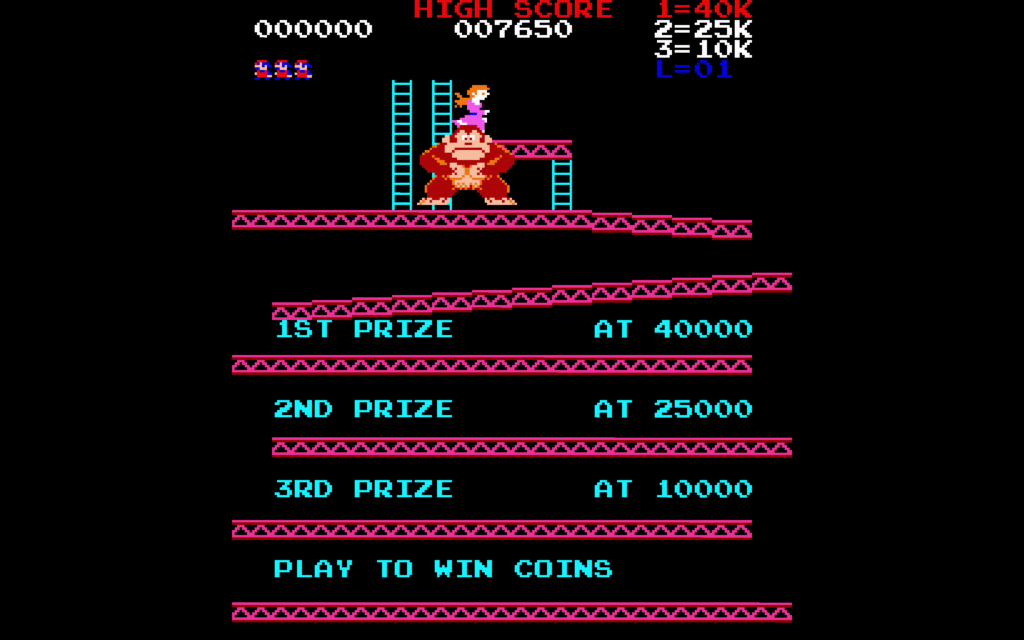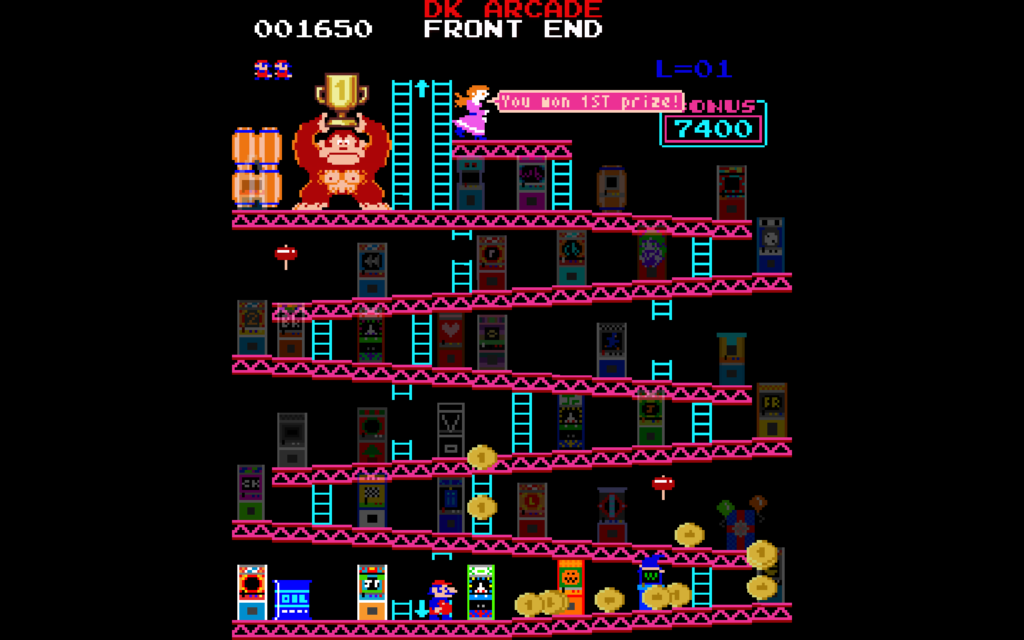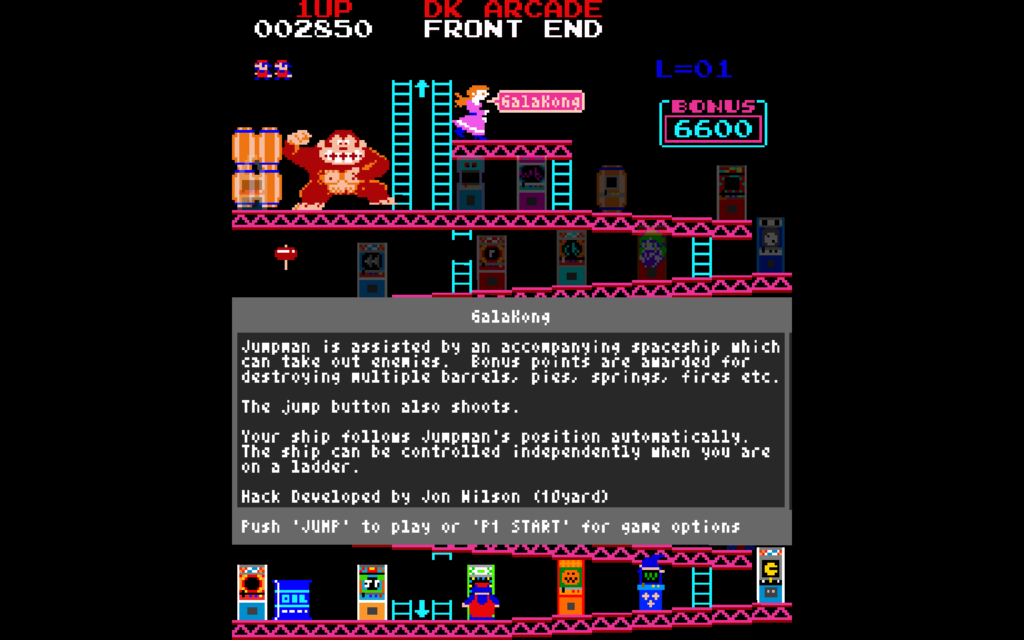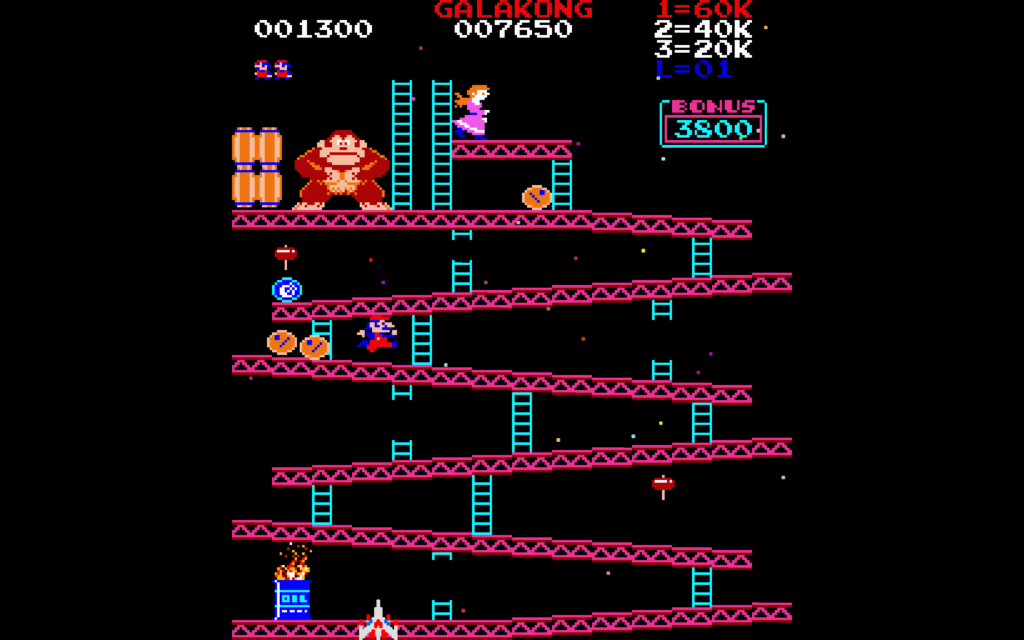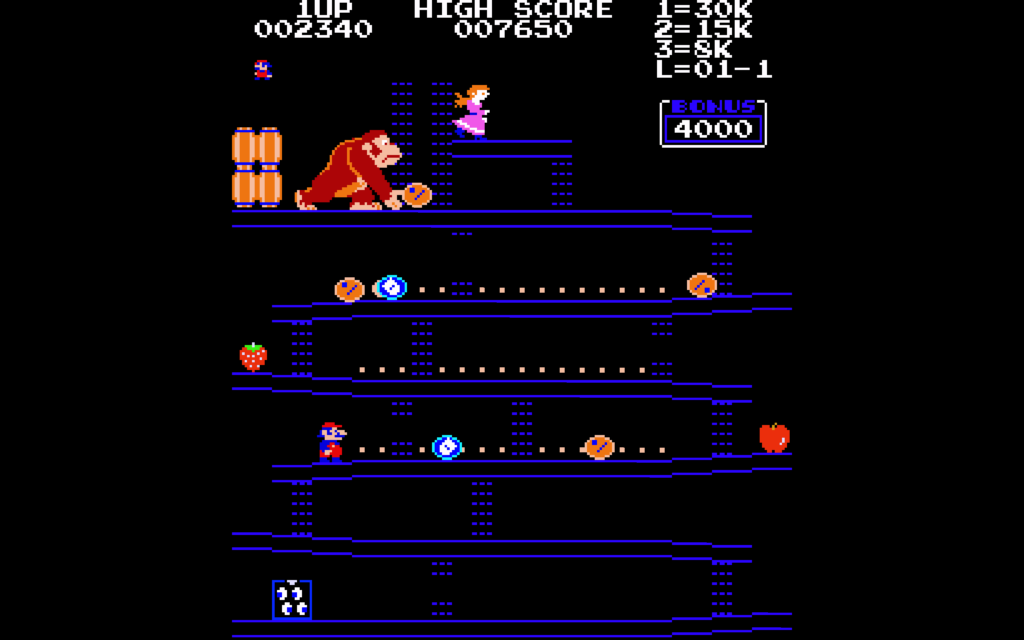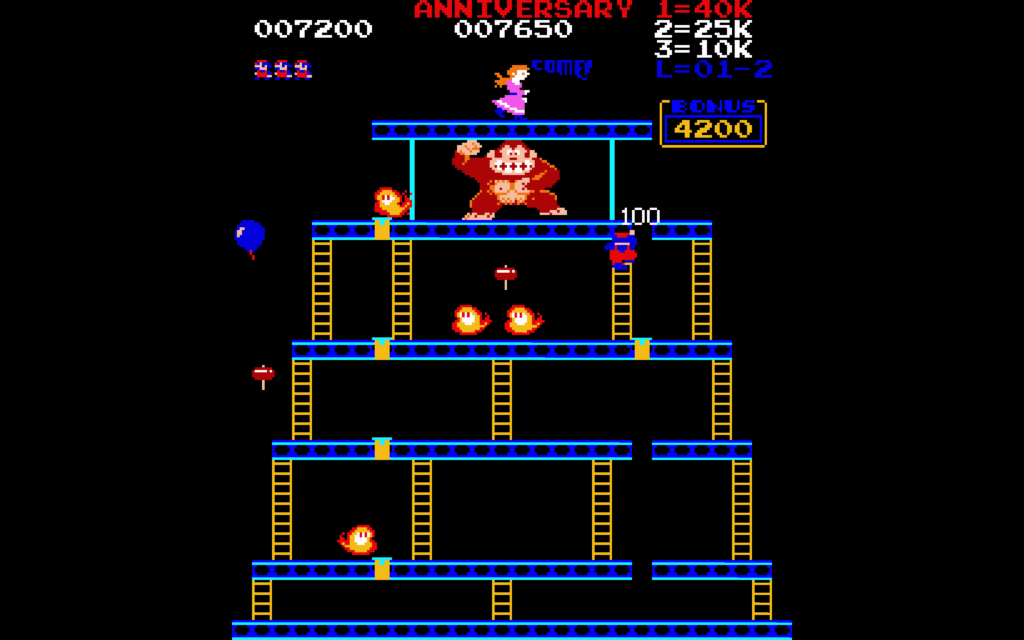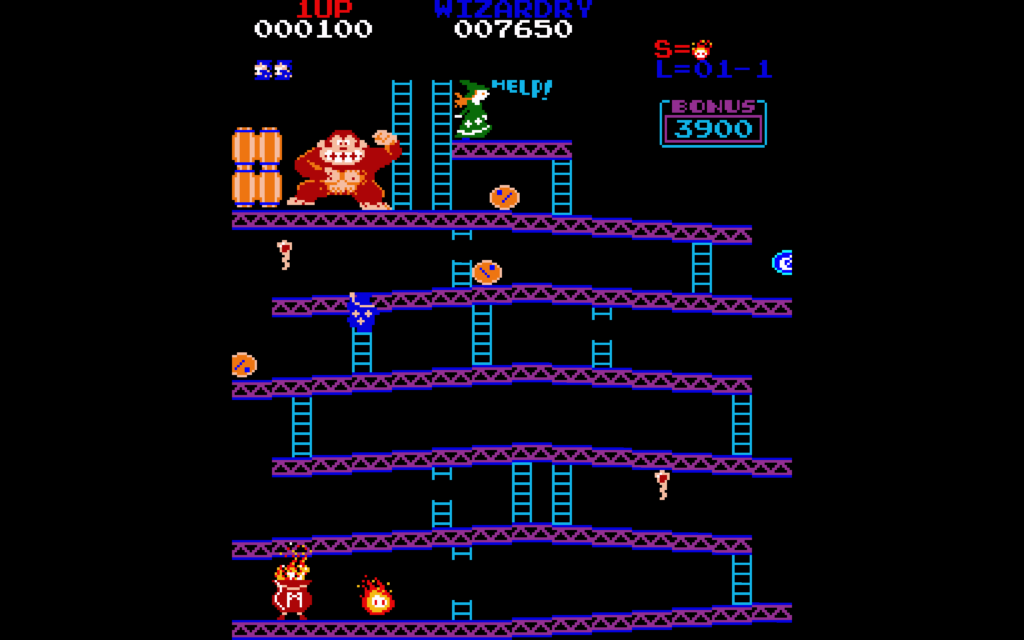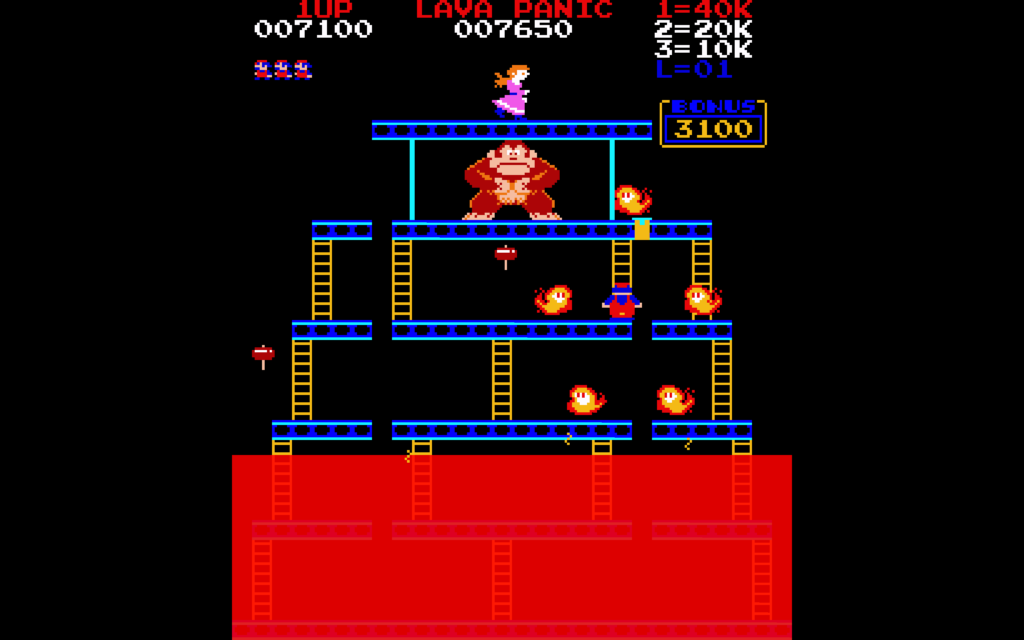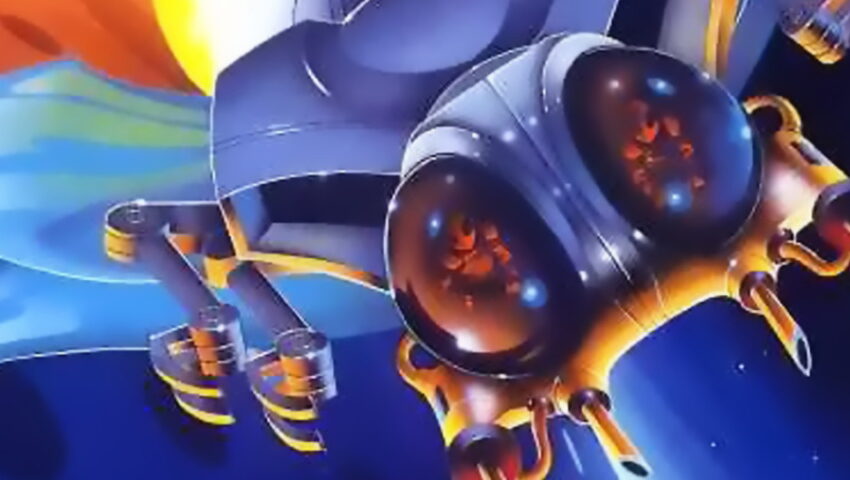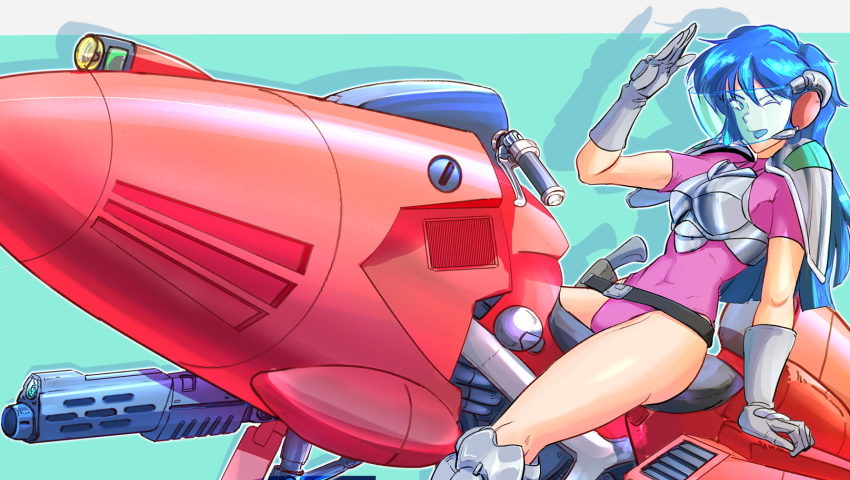
On Romhack Thursdays, we bring you interesting finds from the world of game modifications.
We’ve not done Romhack Thursday for a while. As the winds of the ‘net, and my attention, blow around randomly, sometimes there’s more things that seem worthy of posting than others. This one definitely fits the bill though.
We’ve posted about 10yard’s intriguing Donkey Kong hacks Galakong and Vector Kong before. I don’t think they’re actually hacks in the classic sense of the term, modifications of a game’s software intended to run on its original hardware, or at least an emulation or simulation of it. Galakong might, and Vector Kong definitely does, rely on Lua support in MAME to produce, respectively, a version of Donkey Kong where Mario teams up with the ship from Galaga, and another version of Donkey Kong limited to the Girders stage, a.k.a. Ramps, but with sharp colorful line-drawn artwork akin to that produced by Atari’s later Vectorscan monitors.
10yard let us know that they have produced a front-end to a variety of Donkey Kong romhacks, 90 in total. It runs on Windows an Raspberry Pi, although if it runs on the latter I suppose it must also be possible to get it to work on Linux? Maybe?
It’s not just a front end though. It presents all of its mods through an interface that itself plays like Donkey Kong! You move Mario around the levels of the classic arcade game (they’re connected vertically), and each is littered with arcade machines. You can play them with coins collected them as DK rolls them through the boards, and also earned by getting good scores in each game. Collecting more coins not only gives you more chances to play, but it unlocks further games in the collection.
You download the package from the Github page linked above. You must also provide the MAME-compatible romsets for Donkey Kong, Donkey Kong Jr. and Donkey Kong 3. (It might work without without all of them, but fewer games will be available.) Of course, it’s up to you to rip, or otherwise provide, those files. If you provide them, it’ll handle all the patching for you automatically. It even includes its own custom version of MAME to play them.
Both Galakong and Vector Kong are among the hacks provided, but there’s so much more to see and play besides those, including Halloween, Christmas and Doctor Who themes hacks. There’s really too many to mention here, and I’ve only started unlocking games myself. I’ll leave you with the closing link, and some screenshots of the hacks included that I’ve managed to unlock so far.
DKAFE (by 10yard, for Windows and Raspberry Pi, on Github)
